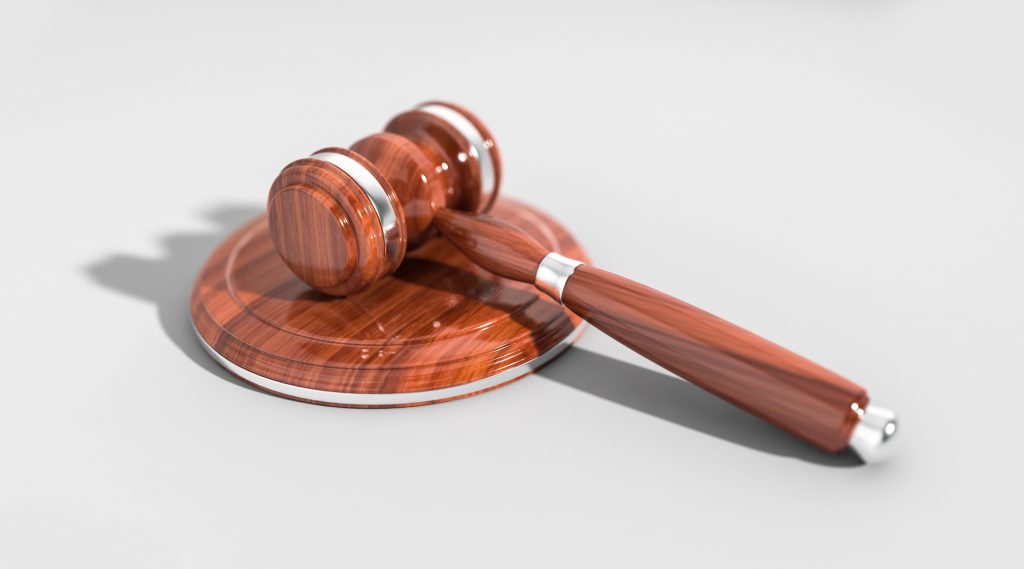 Benjamin Franklin had good reason to make the statement, “neither a borrower nor a lender be.” The potential for risk on either side of the transaction is significant. Be it the likelihood of not getting paid, or the possibility that you will not be able to repay the debt, many find that it is better to avoid the perils of money lending altogether. But that is just not practical. The way big plans are realized is often with money we do not yet have. And loaning money at interest is usually a great short-term investment, if you have the cash to spare. How do we assure our debt agreements will hold up in court?
Benjamin Franklin had good reason to make the statement, “neither a borrower nor a lender be.” The potential for risk on either side of the transaction is significant. Be it the likelihood of not getting paid, or the possibility that you will not be able to repay the debt, many find that it is better to avoid the perils of money lending altogether. But that is just not practical. The way big plans are realized is often with money we do not yet have. And loaning money at interest is usually a great short-term investment, if you have the cash to spare. How do we assure our debt agreements will hold up in court?
On February 24, 2014, New Orleans resident Lois Guillory made a $40,000 loan to Percy Goulette and Alan Sagely, with interest totaling $5,000 and due in one year’s time. The parties signed a promissory note memorializing all the terms. But once February 24, 2015 came around, Goulette and Sagely refused to pay the obligation. When Ms. Guillory filed a lawsuit to recover her investment, Mr. Goulette tried to have the claim dismissed, stating that his business Goulette Ice actually borrowed the money. Goulette claimed he and Sagely did not borrow the money individually, but signed the note in their capacity as agents of Goulette Ice. In fact, the note identified the men as owners of Goulette Ice in two places, one of which was below the signature line. This, in Goulette’s eye, meant he and Sagely were not personally guaranteeing repayment, and not liable for the loan. The Trial Court granted Goulette’s peremptory exception of no cause of action, and Ms. Guillory appealed.
A peremptory exception for no cause of action is essentially one party asking the court to dismiss the case because there has been no offense for which to sue. These exceptions are judged solely on the pleadings, and neither party may introduce evidence to support or object to the exception. La. C.C.P. art. 931. Ms. Guillory’s original petition contained a copy of the promissory note, and the Appellate Court closely reviewed that document.
 Louisiana Personal Injury Lawyer Blog
Louisiana Personal Injury Lawyer Blog


 When a party to a lawsuit waits too long to respond to a lawsuit or flat out declines to respond, courts have the ability to resolve the case with a default judgment. This default judgment resolves the case and the non-responding party must live with the court’s decision. While not ideal, it is a needed mechanism for times when a party does not comply with the rules. With the help of an excellent attorney an injured driver won his lawsuit when a Leesville vehicle repair shop failed to properly respond to his lawsuit.
When a party to a lawsuit waits too long to respond to a lawsuit or flat out declines to respond, courts have the ability to resolve the case with a default judgment. This default judgment resolves the case and the non-responding party must live with the court’s decision. While not ideal, it is a needed mechanism for times when a party does not comply with the rules. With the help of an excellent attorney an injured driver won his lawsuit when a Leesville vehicle repair shop failed to properly respond to his lawsuit. After a hard fought jury trial, an appeal can be expected. But, what cannot be anticipated is a transcribing error by the court that renders the judgment as invalid and makes any appeal impossible. Excellent attorneys can catch errors by other parties and avoid multiple extra steps before a lawsuit can be resolved. That was the case here as mismatching damage award classification labels extended a lawsuit well beyond its anticipated end.
After a hard fought jury trial, an appeal can be expected. But, what cannot be anticipated is a transcribing error by the court that renders the judgment as invalid and makes any appeal impossible. Excellent attorneys can catch errors by other parties and avoid multiple extra steps before a lawsuit can be resolved. That was the case here as mismatching damage award classification labels extended a lawsuit well beyond its anticipated end. If you and the opposing party in your lawsuit reach a settlement agreement, it might seem like your legal battle is over. However, trouble can arise if the other party does not do what they promised to do. This is the situation Cheri Gardner found herself in following a car wreck and the resulting settlement with State Farm.
If you and the opposing party in your lawsuit reach a settlement agreement, it might seem like your legal battle is over. However, trouble can arise if the other party does not do what they promised to do. This is the situation Cheri Gardner found herself in following a car wreck and the resulting settlement with State Farm.  Employment discrimination can take many forms. One common form is gender discrimination. However, an employer may be able to avoid liability if they can provide legitimate and nondiscriminatory reasons why they decided to hire someone else that are not based on the candidate’s gender.
Employment discrimination can take many forms. One common form is gender discrimination. However, an employer may be able to avoid liability if they can provide legitimate and nondiscriminatory reasons why they decided to hire someone else that are not based on the candidate’s gender. Generally, terminating an employee on the basis of race is a violation of the Louisiana Employment Discrimination Law, which is similar to Title VII of the Civil Rights Act of 1964.
Generally, terminating an employee on the basis of race is a violation of the Louisiana Employment Discrimination Law, which is similar to Title VII of the Civil Rights Act of 1964.  A 2016 case demonstrated the importance of making sure our universities remain safe and secure. While one would like to think our schools would be free from the dangers of larger society, Tulane learned the necessity of vigilance.
A 2016 case demonstrated the importance of making sure our universities remain safe and secure. While one would like to think our schools would be free from the dangers of larger society, Tulane learned the necessity of vigilance. Often times during a lawsuit, cases involve a classic “battle of experts,” where each side presents an expert with an opinion which differs from their respective opponent’s side. The recent Jefferson Davis Parish case involved this exact situation.
Often times during a lawsuit, cases involve a classic “battle of experts,” where each side presents an expert with an opinion which differs from their respective opponent’s side. The recent Jefferson Davis Parish case involved this exact situation. In order to successfully handle a lawsuit addressing the duty a business has to its patrons, an injured party should know that under Louisiana’s duty-risk analysis the main questions are: (1) whether a duty was owed; (2) whether that duty was breached; and (3) whether the breach caused the patron’s harm. Additionally, for a lawsuit in which the premises of the building are alleged to be dangerous, the plaintiff must prove that the building defect in question was “unreasonably dangerous.”
In order to successfully handle a lawsuit addressing the duty a business has to its patrons, an injured party should know that under Louisiana’s duty-risk analysis the main questions are: (1) whether a duty was owed; (2) whether that duty was breached; and (3) whether the breach caused the patron’s harm. Additionally, for a lawsuit in which the premises of the building are alleged to be dangerous, the plaintiff must prove that the building defect in question was “unreasonably dangerous.” The “burden of proof” may be a familiar concept to everyone, even those inexperienced with the courts. The idea is that the party in a lawsuit holding the “burden of proof” is tasked with providing evidence that reaches the level of proof required to meet the burden. In car accidents, where amount of fault decides how damages may be determined, this burden is especially important. The evidence in some car accidents makes the division extremely obvious, both as to fault and to extent of damage. Other cases, however, especially when the accident is relatively minor, may not be so clear cut. In an unpublished opinion, the Louisiana Third Circuit Court of Appeal considered such a case where the burden of proof was the main issue.
The “burden of proof” may be a familiar concept to everyone, even those inexperienced with the courts. The idea is that the party in a lawsuit holding the “burden of proof” is tasked with providing evidence that reaches the level of proof required to meet the burden. In car accidents, where amount of fault decides how damages may be determined, this burden is especially important. The evidence in some car accidents makes the division extremely obvious, both as to fault and to extent of damage. Other cases, however, especially when the accident is relatively minor, may not be so clear cut. In an unpublished opinion, the Louisiana Third Circuit Court of Appeal considered such a case where the burden of proof was the main issue.